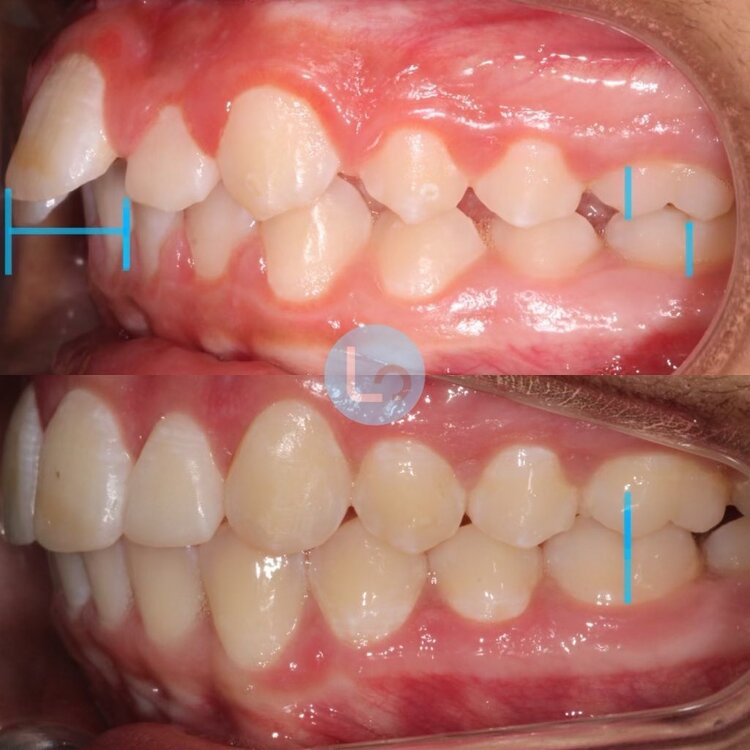The 6-Minute Rule for Legacy Orthodontics
The Greatest Guide To Legacy Orthodontics
Table of ContentsThe Best Guide To Legacy OrthodonticsThe Of Legacy OrthodonticsLegacy Orthodontics Can Be Fun For AnyoneWhat Does Legacy Orthodontics Do?Not known Details About Legacy Orthodontics
In enhancement, we supply adjustable therapy schedules, adaptable settlement options and a fun, satisfying experience.An orthodontist is a dentist trained to diagnose, protect against, and deal with teeth and jaw abnormalities. They correct existing problems and are trained to identify troubles that might establish in the future. Orthodontists collaborate with individuals of every ages, from youngsters to adults. Individuals commonly associate an excellent smile with healthiness.
Malocclusion, or misaligned teeth, can cause oral problems, consisting of dental caries, periodontal disease, and hard or agonizing eating. Not everyone is birthed with straight teeth. If you have a poor bite or huge rooms in between your teeth, you might wish to seek advice from a dentist concentrating on orthodontic treatment.
The 7-Minute Rule for Legacy Orthodontics
( Photo Credit Report: DigitalVision/Getty Images) Orthodontists make use of taken care of and removable dental tools, like braces, retainers, and bands, to transform the position of teeth in your mouth. Orthodontic therapy is for dental abnormalities, consisting of: Crooked teethBite issues, like an overbite or an underbiteCrowded teeth or teeth that are also much apartJaw misalignmentThe goal of orthodontic treatment is to enhance your bite.
A healthy and balanced bite ensures you can consume, eat, and talk correctly. While you might believe of orthodontists as primarily for youngsters or teenagers who require braces, they can fix oral troubles at any kind of age. Orthodontists participate in university, oral college, and orthodontic college. After graduation, they spend 2 or 3 years in an orthodontic residency program.
, yet not all dental practitioners are orthodontists. They concentrate on two areas: Just how to appropriately and securely relocate teeth Just how to appropriately guide advancement in the teeth, jaw, and faceOnce an orthodontist has finished training, they have the choice to become board licensed.
The Legacy Orthodontics PDFs
Malocclusion leads to tooth congestion, a twisted jaw, or uneven bite patterns. Malocclusion is typically treated with: Your orthodontist connects steel, ceramic, or plastic square bonds to your teeth.
If you have only small malocclusion, you might have the ability to utilize clear dental braces, called aligners, instead of traditional braces (https://my.omsystem.com/members/legacyortho). Some individuals require a headgear to aid move teeth into line with stress from outside the mouth. After braces or aligners, you'll require to put on a retainer. A retainer is a personalized tool that maintains your teeth in position.
They're usually utilized on youngsters. They can produce extra area in the mouth without having to draw teeth. If you have a major underbite or overbite, you could need orthognathic surgical procedure (additionally called orthodontic surgery) to extend or reduce your jaw. Orthodontists use cords, medical screws, or plates to sustain your jaw bone.
You might need to see an orthodontist if you have: Crowding or otherwise sufficient area for every one of your teethOverbite, when your top teeth come your bottom teethUnderbite, when your base teeth are also far forwardSpacing or issues with gapsCrossbite, which is when your upper teeth fit behind your bottom teeth when your mouth is closedOpen bite or an upright void in between your front bottom and upper teethMisplaced midline, when the center of your bottom and upper teeth do not line up Correcting a dental malocclusion can: Make biting, chewing, and speaking easierImprove the symmetry of our face and your total appearanceEase discomfort from temporomandibular joint problemsSeparate your teeth and make them less complicated to clean, assisting stop tooth degeneration or tooth cavities It's commonly a dental professional that first notifications misaligned teeth during a regular examination.
A Biased View of Legacy Orthodontics

During your first orthodontic consultation, you'll likely have: A dental examPhotos taken of your face and smileDental X-raysPanoramic (360 degree) X-rays of your face and headImpressions to create mold and mildews of your teethThese examinations will assist your orthodontist understand just how to continue with your treatment. braces. An orthodontist is a dental professional who's had training to treat your teeth and jaw
Orthodontists might do surgical procedure, exams,X-rays,and more to help you achieve a much more comfortable, healthier smile. An orthodontist is focused on your bite, so something like a damaged tooth would be handled by a dental expert. Orthodontists are dental professionals yet not all dental experts are orthodontists. Orthodontists are concentrated on your bite, or the means your teeth meshed, and the straightness of your teeth.
Ever before wondered exactly how stars always appear to have perfectly straightened teeth? go to these guys The response often depends on the competent hands of an orthodontist. However what specifically does an orthodontist do? Orthodontists are dental professionals who focus on dealing with irregularities in the teeth and jaws. Their proficiency goes past simply developing a gorgeous smile; it extends to improving your general dental health and wellness and function.
Legacy Orthodontics Can Be Fun For Everyone

, orthodontists have a diverse toolkit at their disposal. These reliable braces use a system of braces bonded to the teeth and linked by wires.
Clear aligners, like Invisalign, are a preferred option for people looking for an extra very discreet treatment choice. These detachable trays are personalized to progressively change the teeth's setting. Headwear might be utilized together with braces or aligners to use added targeted pressures, especially for correcting jaw discrepancies. In cases of narrow jaws, palatal expanders can be used to produce area for correct tooth placement.